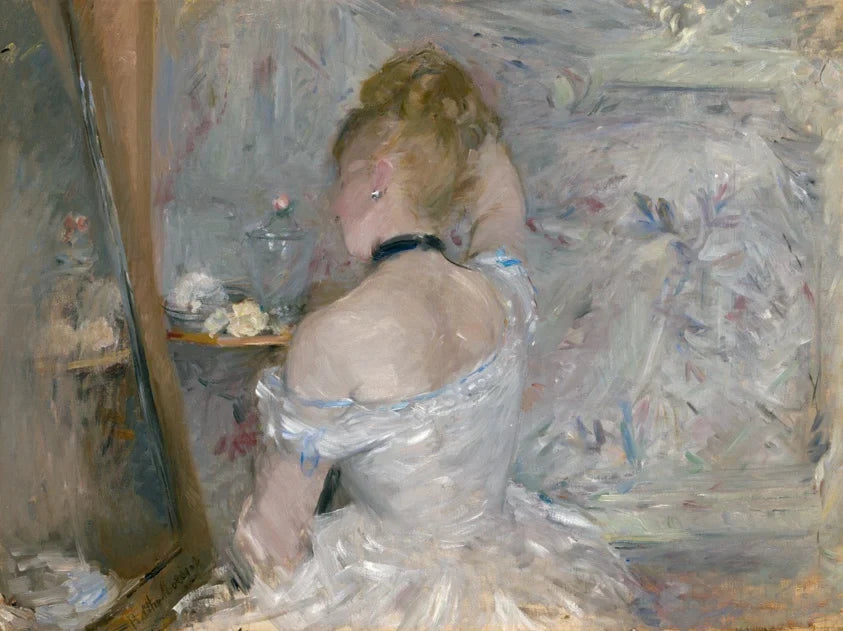
Masterful Painting Techniques Through the Ages - Exploring the Artistic Methods of History's Greatest Painters
Share
The evolution of painting techniques across the centuries has been shaped by the genius and innovation of legendary artists whose styles and methods continue to inspire the art world today. From the delicate linear grace of the Renaissance painting techniques to the bold emotional realism of the Baroque, the vibrant colors of Impressionism, and the symbolic allure of modern art, these techniques reflect both cultural influences and personal expression unique to each artist.

The Graceful Lines and Layered Colors of Sandro Botticelli
Sandro Botticelli, a star of the Early Renaissance, captivated viewers with his mythological scenes and refined painting methods. His approach was characterized by graceful outlining of slender figures and soft tonal contrasts. Botticelli’s use of pigments such as ultramarine from lapis lazuli and cinnabar mixed with egg yolk or oil allowed him to build delicate layers of colors. His famous scumbling method involved thin layering before finishing with an opaque topcoat. Such layered application aligns with traditional oil painting techniques developed during the Renaissance. Botticelli also employed powdered gold for ornamental effects, a technique borrowed from his early years as a goldsmith apprentice.

Caravaggio’s Dramatic Chiaroscuro and Realism
Michelangelo Merisi da Caravaggio revolutionized Baroque painting through his powerful use of chiaroscuro, the dramatic interplay of light and shadow that highlights emotional intensity and physical realism. This technique, a hallmark of Baroque painting, allowed Caravaggio to create striking contrasts that communicate mood and depth. His unique studio arrangement, resembling a camera obscura, helped him capture naturalistic details swiftly and precisely. Moreover, Caravaggio’s frequent inclusion of memento mori objects underscores the moral themes prevalent in his works.
Rembrandt’s Impasto and Luminous Portraits
Master of the Dutch Golden Age, Rembrandt combined the tenets of chiaroscuro with the impasto technique, where paint is applied thickly to create texture and dimensionality. This method enhances light reflection on the canvas, giving his portraits a three-dimensional effect. Uniquely, Rembrandt often used a life-sized mannequin instead of live models, positioning clothes on it to maintain poses, enabling meticulous attention to detail in his compositions. His mastery is a testament to the fusion of technique and storytelling in Dutch Golden Age painting.

Édouard Manet and the Birth of Modernism with Plein Air Techniques
Édouard Manet diverged from classical subjects by painting scenes from contemporary life, utilizing the plein air technique — painting outdoors to capture fleeting moments and the effects of natural light. This method fuels the vibrancy and spontaneity characteristic of Impressionism. Manet’s bold brushwork, employing broad, visible strokes and pure, unblended colors, set a precedent for later modernist painters, ushering in an era that celebrated immediacy and perception over fine detail.
Gustav Klimt’s Ornate Symbolism and Golden Mastery
A central figure of the Vienna Secession, Klimt incorporated gold leaf extensively in his paintings to evoke richness and texture. His symbolic works, such as The Kiss, balance ornamental opulence with erotic and dreamlike themes, often applying the golden ratio to achieve harmonious composition. Klimt’s style exemplifies the intersection between Symbolism and Art Nouveau, uniquely blending decorative elements with profound emotional narratives.

Berthe Morisot’s Delicate Impressionistic Touch
As a pioneering woman in Impressionism, Berthe Morisot’s oeuvre is distinguished by soft brushstrokes and a muted yet harmonious color palette. Her intimate portraits and domestic scenes, such as Woman at her Toilette, reveal an emphasis on mood and atmosphere over precise detail, capturing fleeting emotions through her lyrical approach to color and light.
Conclusion: The Endless Innovation of Artistic Techniques
The continuous evolution of art is deeply embedded in the innovative techniques applied by masters like Botticelli, Caravaggio, Rembrandt, Manet, Klimt, and Morisot. These artists have combined traditional methods such as oil layering and impasto with groundbreaking approaches like chiaroscuro and plein air painting, shaping the dynamic language of art throughout centuries. Their contributions ensure that painting remains a vivid reflection of cultural history and personal expression.

Frequently Asked Questions (FAQ)
Q1: What is chiaroscuro and which artists are famous for using it?
A1: Chiaroscuro is an art technique that uses strong contrasts of light and shadow to create volume and dramatic effect. Caravaggio and Rembrandt are among its most famous practitioners.
Q2: How did plein air painting influence Impressionism?
A2: Plein air painting involves painting outdoors to capture the natural light and atmosphere directly, which led Impressionists like Manet to use vivid colors and loose brushwork to render everyday scenes more spontaneously.
Q3: What is impasto in painting?
A3: Impasto is a painting technique where paint is laid on thickly to stand out from the canvas surface, imparting texture and depth. Rembrandt famously employed impasto to give his portraits a lifelike quality.
Q4: Why did Gustav Klimt use gold leaf in his paintings?
A4: Klimt’s use of gold leaf added ornamental richness and a sense of luxury to his paintings, aligning with the symbolic and decorative character of his style in the Art Nouveau and Symbolist movements.
Q5: How did Botticelli achieve the delicate skin tones in his paintings?
A5: Botticelli achieved this by layering translucent pigments like ochre and cinnabar mixed with egg yolk or oil, building color through subtle brushstrokes before applying an opaque final coat, sometimes enriching details with powdered gold.
